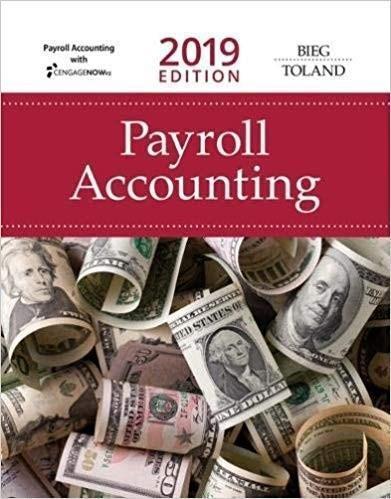Question
Case study question: Swift Airlines Swift Airlines has a daily return flight from London to Nice. The aircraft for the flight has a capacity of
Case study question: Swift Airlines Swift Airlines has a daily return flight from London to Nice. The aircraft for the flight has a capacity of 120 passengers. Swift sells its tickets at a range of prices. Its business plan works on the basis of the following mix of ticket prices for each day's flight:
Business
30 @ 300
9,000
Economy regular
40 @ 200
8,000
Advance purchase
20 @ 120
2,400
7-day-purchase
20 @ 65
1,300
Stand-by
10 @ 30
300
Revenue
120
21,000
Swift's head office accounting department has calculated its costs as follows:
Cost per passenger (to cover additional fuel, insurance, baggage handling etc.) assuming full load 25 per passenger
Flight costs (to cover aircraft lease, flight and cabin crew costs, airport and landing charges etc.) 3,000 (120 @ 25) 7,500 per flight
Route costs (to cover the support needed for each destination) 2,000 (based on of the daily cost of 4,000 (balance charged to return flight)) Business overhead 3,000 (allocation of head office overhead)
Total 15,500
This results in a budgeted profit of 5,500 per flight, assuming that all seats are sold at the budgeted price. The head office accountant for European routes has advised the route manager for Nice that while the Nice-London inbound leg is breaking even, losses are being made on the London-Nice outbound leg. If profits cannot be generated, the route may need to be closed, with the aircraft and crew being assigned to another route. The route manager for Nice has extracted recent sales figures, a typical flight having the following sales mix:
% of tickets sold Business
60
18 @ 300
5,400
Economy regular
70
28 @ 200
5,600
Advance purchase
80
16 @ 120
1,920
7-day purchase
75
15 @ 65
975
Stand-by
100
10 @ 30
300
Revenue
87
14,195
The route manager has calculated a loss on each outbound flight of 1,305. She believes that there is a market for 48-hour ticket purchases if a new fare of 40 was introduced, as this would be 5 less than the price charged by a competitor for the same ticket. She estimates that she could sell 15 seats per flight on this basis. This would not affect either the 7-day purchase, which is used by business travelers, or stand-by fares, which are usually oversubscribed. The additional revenue of 600 (15 @ 40) would cover almost half the loss. The route manager has prepared a report for her manager asking that the new fare be approved and allowing her three months to prove that the new tickets could be sold. Comment on the route manager's proposal.
Step by Step Solution
There are 3 Steps involved in it
Step: 1

Get Instant Access to Expert-Tailored Solutions
See step-by-step solutions with expert insights and AI powered tools for academic success
Step: 2

Step: 3

Ace Your Homework with AI
Get the answers you need in no time with our AI-driven, step-by-step assistance
Get Started


